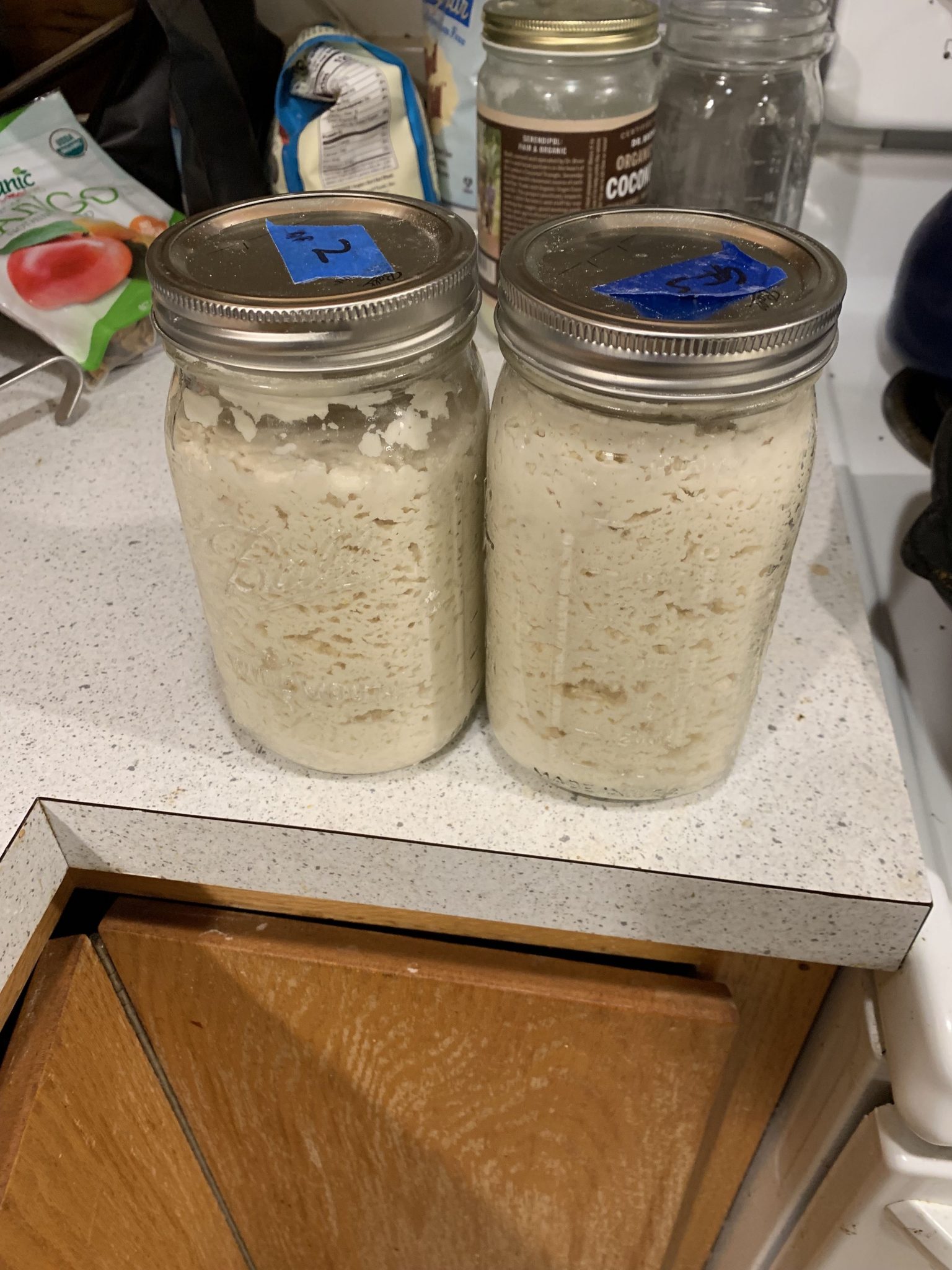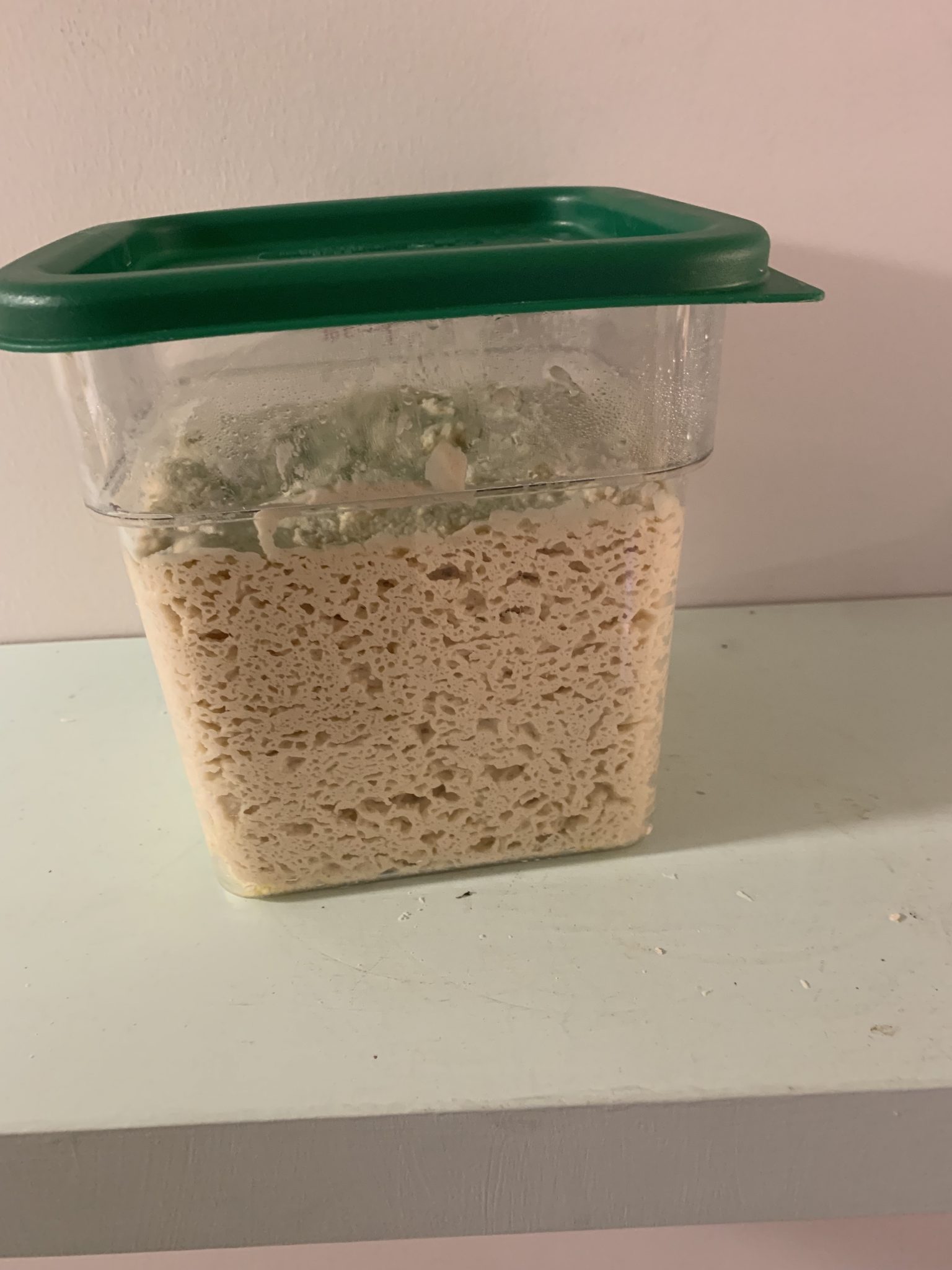To make really good gluten-free artisan, crusty sourdough bread, you need a sourdough culture. Traditionally these have been used for wheat sourdoughs, but you can make gluten-free sourdough cultures too and they make really tasty, healthy bread!
Equipment

Catching your own sourdough
You can catch your own sourdough using these instructions. It’s free, is a tried and true method, and works fairly well. It may take several tries before you catch one that tastes good though. Follow the instructions in the link above, but use gluten-free flour instead of wheat flour. I use Bob’s Red Mill Gluten Free 1-to-1 All Purpose Baking Flour.
For the container, I use a 1-quart wide-mouth mason jar. Once you have caught it, you can follow the instructions below to care for it.
Buying a sourdough culture
I wanted a very sour sourdough, which you don’t always get from catching your own. So I bought one from Sourdoughs International. This is a really great company! They collect and distribute sourdough cultures from around the world. I used the Giza Culture, which has a nice sour taste, but there are a quite a few other cultures available that are all different.
These freeze-dried cultures will have wheat flour in them. How do you make them gluten-free? What I did was revive them according to the sourdough culture activation instructions, but using gluten-free flour. Then I went through 10 feeding cycles as described in the above link, each time discarding 90% of the culture, adding gluten-free flour and water, letting the culture ferment 24 hours, and repeating. This will take the initial wheat content of the culture down to an infinitesimal amount. If you are concerned you can do more feeding cycles to further reduce the wheat content.
Getting ready to bake
I keep two jars of dormant sourdough culture in my refrigerator, in case one goes bad or gets moldy, which sometimes happens. When I want to bake, I have to think ahead one day.
- The day before baking, take out a jar of sourdough starter from the fridge, or both if making a double recipe. Throw out most of the starter, but leave about a tablespoon full of starter at the bottom of the jar. This will be full of the sourdough yeast and beneficial bacteria. See Sourdough International’s sourdough reactivation instructions for why throwing out most of the starter is a good idea.
- Feed the sourdough with 1 cup of gluten-free flour, and one cup of filtered chlorine-free water.
- Mix well, put the mason jar lids on loosely, and leave on the kitchen counter (or somewhere else at room temperature) overnight.
- The starter will start to bubble up and smell sour. When that happens you are ready to bake!
Here’s what the sourdough looks like after it’s been made into dough and done souring:
